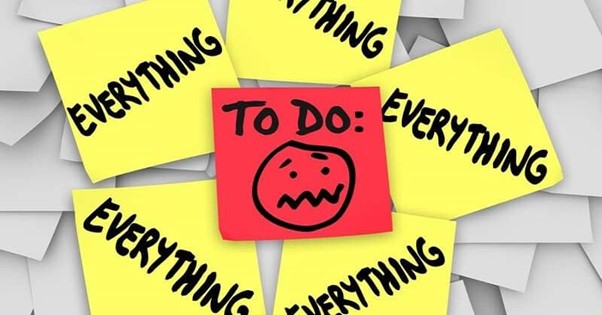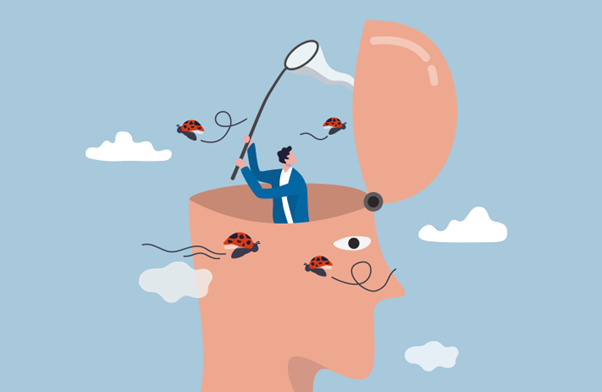
Coaching Techniques for Enhancing Work-Life Balance and Personal Fulfillment
Many of us struggle with maintaining a healthy work-life balance. In our fast-paced lives, we often put the needs of others before our own, leaving us feeling stressed and overwhelmed.
Fortunately, there are techniques and strategies for improving your work-life balance and personal fulfillment.
Here we’ll discuss the basics of achieving better balance in life, by setting goals and developing strategies that can help you achieve them.
Identifying Your Current Work-Life Balance Situation
The first step to achieving improved work-life balance is understanding the current state of your life. What activities and commitments are you currently involved in?
Are they taking up too much of your time? Do you feel like you’re constantly giving more than receiving?
Make a list of the aspects of your life that make up your current work-life balance situation so that you can begin to create goals for improvement.
Setting Goals for Improved Work-Life Balance
Now that you clearly understand your current work-life balance situation, it’s time to set some goals. What improvements would you like to see? More leisure time? Increased productivity? Improved relationships with colleagues and family members?
Writing down specific goals will help keep you on track as you develop and work toward them.
Strategies for Achieving These Goals
Prioritize Your Time
You need to prioritize your time between work and personal life. You can use the 80/20 rule which states that as much as 80% of your goals can be achieved through 20% of your efforts.

Focus your energy and time on the work that can get you closer to your goals. Set out achievable goals for your work and personal life and prioritize them accordingly.
Create a Schedule
Creating a schedule is key to achieving a proper work-life balance. You need to set up specific work hours and make sure that you maintain them.
Stick to these hours strictly, finishing the necessary work and avoiding taking work home. Schedule time for relaxation, leisure, and exercise regularly.
Learn to Delegate
Delegating responsibilities to others will help you to reduce stress levels and focus on essential work. Learning to delegate can be a challenge at first, but it is necessary for maintaining a healthy work-life balance.
Start by delegating simple tasks and gradually delegate more important responsibilities as you become confident with your team.
Take Regular Breaks
Taking regular breaks is necessary to reduce stress levels and improve productivity. Take scheduled breaks throughout the day, even if it’s just a few minutes to stretch, walk around, or breathe.
Include time for relaxation and reflection away from work-related activities in your schedule.
Learn to Say No
Learning to say no is essential for maintaining a healthy work-life balance. Saying no to a responsibility that isn’t essential can free up time for priorities at home.
Saying no helps to avoid spreading yourself too thin with your time and effort.
Set Boundaries
Setting clear boundaries between your work and personal life is necessary for creating a healthy work-life balance. At the office, avoid taking work home and establish clear communication with colleagues about the availability of time at home.

At home, set boundaries about work-related distractions and establish time without work.
Unplug
Unplugging technology is necessary to create a balance between work and personal life. You’ve to disconnect from emails and work while enjoying time with family and friends.
Schedule set times to check your email and work-related messages that don’t interfere with your personal life.
Use Time Management tools
Time management tools like Pomodoro timers and scheduling tools are essential for maintaining focus and increasing productivity.
They help break down work tasks into manageable pieces while helping you to stay on-task and avoid distractions.
Stay Active and Healthy
Exercising daily significantly reduces stress levels, increases productivity, and boosts health. Incorporating regular exercise into your schedule improves your overall physical and mental well-being.
Ensure you maintain a healthy and balanced diet that helps your body relax and regenerate.
Seek Professional Support
When you find it challenging to create a good work-life balance, consider seeking professional support. They can help you overcome the struggles you’re facing by offering advice for personal and career-related matters.

Time Management Tips and Tactics
Managing your time is key to achieving improved work-life balance.
Set Priorities
The first step to effective time management is setting priorities. An essential technique to apply here is the Eisenhower Matrix. Start every day by creating a to-do list and categorizing each task into one of the following four quadrants:
- Urgent and essential
- Urgent but not essential
- Non-urgent but essential
- Not urgent or essential
Focus on urgent and essential tasks, delegate or outsource urgent but not essential tasks, and plan for non-urgent but essential tasks. This method will help you sort out your priorities and manage your time wisely.
Use a Time Management Tool
Using a time management tool is an effective way to track your activities and stay focused. There are many tools you can use, such as calendars, digital apps, or scheduling software.
Identify tools that work for you, and use them consistently to ensure that you create a rhythm and routine that works for you.
Learn to Say No
As a coach, you may often be approached by clients or colleagues asking for help or advice. Saying yes to everything can leave you overwhelmed and overstretched. Learning to say no is a crucial element of effective time management.
Focus on the tasks that matter most to you, and do not hesitate to say no to things that do not align with your objectives.
Minimize Distractions
Distractions can destroy your focus, leading to a drop in productivity.
Adopt smart strategies to minimize distractions, such as turning off notifications, setting phone calls to voicemail, and closing unnecessary tabs on your computer.
You can also block out time for concentrated work or take short breaks to recharge.

Take Regular Breaks
The key to effective time management is also incorporating regular breaks to recharge. Taking time off to relax, exercise, or meditate can help you refresh your energy, improve focus, and increase productivity.
Choose activities that you enjoy, and that helps you build your stamina and adopt healthy habits.
Learning to Delegate More Effectively
Being able to delegate tasks can free up more time to focus on your own needs and goals.
Learning how to effectively share responsibilities with colleagues, family members, or even a virtual assistant can help take some of the pressure off and give you more time for yourself.
Building a Support Network Around You
Having people around you who understand and support your goals can make all the difference when it comes to achieving work-life balance.
Seek out supportive relationships both in and outside of the workplace so you can get the encouragement and help you need as you strive for balance.
Making Yourself a Priority in Life
One of the most important strategies for achieving a better work-life balance is making yourself a priority. Give yourself permission to take a break, set boundaries, and say no when necessary.
When you prioritize your well-being and happiness, you’ll be more able to make lasting changes that will improve your work-life balance.
Conclusion
Improving work-life balance can be a challenge, but it is possible with the right strategies and techniques.
By understanding your current situation, setting achievable goals, and making yourself a priority, you can take steps toward achieving greater balance in life.
With practice and consistency, you’ll be well on your way to personal fulfillment and improved work-life balance.
Best of luck!
Learn more.